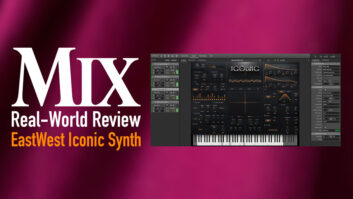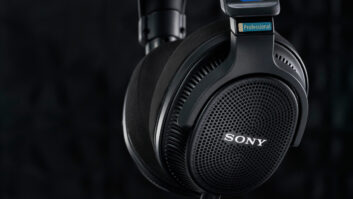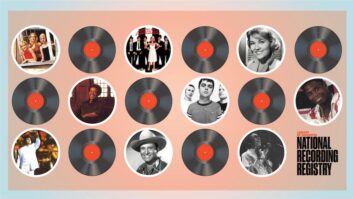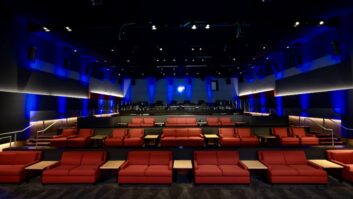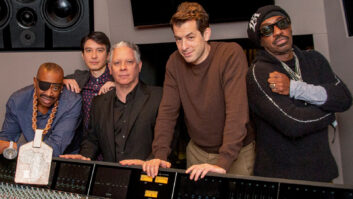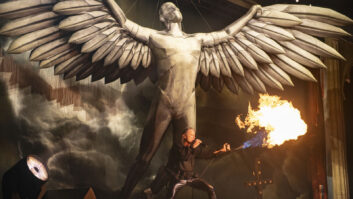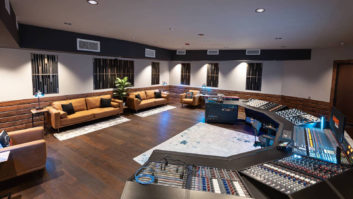MidlakeHailing from just outside Dallas, TX, Midlake has just released its third album, The Courage of Others. Recorded and produced entirely by the band in its own studio, Midlake’s music has drawn comparisons to the early American mellow rock of bands like Fleetwood Mac; America; Crosby, Stills, Nash and Young; and Bread. Since Midlake has opted for the DIY-route with all its recordings, including this one, the group has honed its production chops with each new release. Pro Sound News took a few minutes to speak with Paul Anderson, Midlake’s bass player and main recording engineer, as the band wrapped up its European tour.

On Evolving Recording Capabilities:
Compared to our first two albums, our new album was a big step up for us equipment-wise. Our first record was recorded in a living room with a Roland VS-2480, but by the time we made this album, we had acquired a RADAR 24 and a Soundcraft PS12, a 24-channel, 12-bus console. In the past, we used a little 16×8 Mackie desk with some outboard and our Roland. We really enjoyed working on the RADAR format, not the least because of its tactile working surface—none of us like to feel like we’re working on a computer.
When we started this album, we immediately started recording not even knowing if we had the right songs or even had the right idea for the songs. We just wanted to learn more about the studio we had made. It was the first time we ever recorded with proper isolation and had a separate control room and tracking room. In the past, I would do all the monitoring with headphones while the performers were playing.
On Going It Alone:
We’ve always been a band that wanted to try things ourselves; we made our first two albums completely on our own. On The Courage of Others, we started doing things the way we had always been doing them, but we weren’t as happy with the results this time around. After about a year of messing around, we realized we wanted to develop as a band and change, particularly around our songs and arrangements. Then Tim [Smith, singer/ songwriter] would bring in more songs, and we would jam on them for a while with a live mic in the tracking room.
As far as not having a producer, we’ve always been pretty cognizant of the situation we’ve put ourselves in. I’m very aware that if my head is in the console or if I’m trying to get a particular sound and I’m also playing bass, I’m probably going to do at least one of these jobs very badly. This is not an ideal situation to be in. On the other hand, we didn’t really know of anyone that we would trust working with since we are very particular about the way things sound.
On Not Rushing Creativity:
We’ve spent two years making this new album, and we had probably 30 projects—some of them might have been the same song with different timings, different keys or different arrangements. There wasn’t anything we listened to and thought, “I want this to be on the new album.” It wasn’t until about a year later when we recorded in about three or four days, and everything just clicked. Part of it was that we had a new song that we hadn’t been playing on for the past year, so it felt fresh. We learned quite a bit about recording that year, and it really increased our confidence.
That first song on the album, “Act of Man,” was recorded in about five days with a minimal mic setup. In fact, we only had two microphones on the drums, whereas on other songs we did later, we had between five and seven mics on the drums. I knew when we were recording it that that would be on the album. During those couple of days, everything came together quite fast, and we got takes that we couldn’t re-create later. Musically, “Act of Man” was the benchmark for us on this record. There are other moments on the album that are as good as that song, but for me, that’s when we were at our best, especially the musical and arrangement choices.
On Mixing:
We worked with Matt Pence, an engineer from the Denton area; he has a studio called the Echo Lab. He is one of the best engineers in the Dallas area, especially for rock music. We knew what we wanted the record to sound like, and he understood that if we pulled up the faders on the console in our own studio and messed with it for 10 minutes, we would like how it sounded, because we recorded something that we thought was pretty good.
On Capturing Space in the Recording:
We wanted a little bit of space to come out in the recording, particularly on the electric guitar, since often our acoustic guitars would be right in your face along with the vocals. We always like to put distance and space into the sound; for me, it feels more “vintage” when this is done. There are all kinds of exceptions, but a lot of modern recordings simply lack that space.
As a band, we feel like some of the recordings from the ’70s are the best sounding ever. I have always appreciated the natural dynamics you can hear in these recordings, as well as the audible room sound. It’s not all “loud”—there are places where you are cranking up your stereo and you can actually hear that space—this makes the listening experience more captivating for me.
We can’t re-create that era (we don’t have the tape, the machines, the equipment or the mics that were used back the), but we can try to get that sound. We learn more how to do this with each recording. While we prefer to capture room sound rather than add reverb later, we’re not absolute in anything. If it sounds good, then it is good. It doesn’t matter how you got there.
Jeff Touzeau is a regular contributor to Pro Sound News. His latest book, Home Studio Essentials, is available on Cengage.
